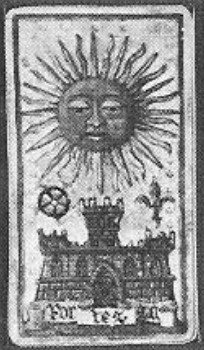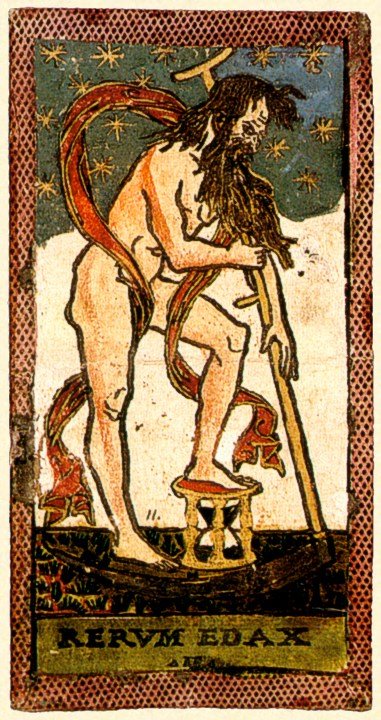And while I am at it, since the title of this thread mentions John Shephard, in his book The Tarot Trumps: Cosmos in Miniature (1983) he presented a nice set of correspondences between the cards, 20 of them, and the six Petrarchan triumphs, in both the A and B orders, a kind of spin-off on Moakley of 1956 (whom he does credit). I will post a copy of his table when I get a chance, in a different thread, since I don't want to detract from the Goldschmidt here.... I know an exceptional whole book that sees the very origin of the tarot precisely with Petrarch, when he resided in Avignon (16). In my opinion, this is an amateur contribution that is coupled with scientific in quotes: this seems to me the maximum in our field; I can only repeat what I have already written (17):Perhaps the most daring result of that book is that from the Triumphi would be derived not only the triumphal tarot cards, but the whole pack, including the number and picture cards. It is better to reduce our expectations and limit ourselves to less ambitious considerations.The origin of the tarot would be connected with Pope John XXII (1249-1334), who was too old and tired to continue reading books. So different authors undertook to provide books reduced to pure and simple sequences of images. Unless I have misunderstood the text (and I am ready to recognize my limited understanding) the authors explain the birth of the tarot sequence as only an extension of the six triumphs celebrated by Petrarch; Also, they go to further extend the set of triumphal cards so as to include, subsequently, the cards of the four suits. As a final result, we obtain that the tarot sequence had already been born, although [start of p. 17] kept in a rather secret form, before the death of Simone Martini (1344), and Petrarch (1374). As for me, I'm always looking to set back the date of the origin of our triumphs, but this is excessive; we can only comment briefly: "You are too kind, Saint Anthony!"
_________________
16. R. Fusi, R. Pio, Tarocchi un giallo storico: Le carte perdute e ritrovate. Firenze 2001; reprinted in 2004 with the title: Petrarca, Simone Martini e le carte.
17. F. Pratesi, Giochi di carte nella repubblica fiorentina. Ariccia 2016, p. 504.
Re: John Shephard - Goldschmidt tarot
61Apparently there is a whole book on the "Avignon" theory of tarot origins. Franco wrote about it in the note on Petrarch's Triumphi, (viewtopic.php?f=11&t=1092&start=20#p17714, from http://www.naibi.net/A/521-PETRAR-Z.pdf ):


